Saludos amigos de Insects Of The World hoy les Quiero compartir esta diminutas polilla Este es un insecto conocido como gusano de seda que se reproduce a partir del motor que hacen las larvas y desde donde cubre la zona en la que se alimenta.
Greetings friends of Insects Of The World today I want to share with you this tiny moth This is an insect known as a silkworm that reproduces from the motor that the larvae make and from where it covers the area where it feeds
"Las hembras viven unos 16 días después de poner todos los huevos (unos 30-200 huevos) mientras que los machos viven unos 28 días.
Los síntomas de infección son la presencia de hilos (compuestos de fibras y heces) en partes ocultas de la ropa o la presencia de adultos.
Los síntomas de daño son rayones o agujeros en las fibras del material atacado.
Después de salir del huevo, las larvas de la polilla tejen un tubo o túnel de seda, donde combinan fibras y excrementos, y comienzan a alimentarse dentro de los límites del tubo, aunque algunas larvas se arrastran desprotegidas.
La hembra vive aproximadamente 16 días luego de poner todos su huevos (rango 30-200) mientras que el macho vive alrededor de 28 días.
Females live about 16 days after laying all the eggs (about 30-200 eggs) while males live about 28 days. Symptoms of infection are the presence of threads (made up of fibers and feces) in hidden parts of clothing or the presence of adults. Symptoms of damage are scratches or holes in the fibers of the attacked material. After hatching, the moth larvae weave a tube or tunnel of silk, where they combine fibers and excrement, and begin to feed within the confines of the tube, although some larvae crawl unprotected.
The female lives for approximately 16 days after laying all her eggs (range 30-200) while the male lives for about 28 days.
Los síntomas de infestación son la presencia de tubos de seda (compuestos por fibras y heces) en las porciones ocultas de la ropa, o presencia de adultos.
Los síntomas de daño son arañazos o directamente agujeros en las fibras del material atacado.
La larva de la polilla luego de emerger del huevo teje un tubo o túnel de seda al que incorporan fibras y heces, comenzando a alimentarse inmediatamente dentro de los límites del tubo aunque algunas larvas se arrastran sin protección totalmente expuestas, tiempo de vida desde 30 días a 29 meses dependiendo de alimento, humedad relativa y temperatura.
Symptoms of infestation are the presence of silk tubes (made up of fibers and feces) in the hidden portions of clothing, or the presence of adults. Symptoms of damage are scratches or holes in the fibers of the attacked material. After emerging from the egg, the moth larva weaves a tube or silk tunnel into which they incorporate fibers and feces, beginning to feed immediately within the limits of the tube, although some larvae crawl without protection fully exposed, life time from 30 days to 29 months depending on food, relative humidity and temperature.
La larva prefiere alimentarse en lugares ocultos como debajo de los cuellos, en el entramado inferior, debajo de las alfombras, áreas de alta humedad.
Los adultos (alados) no se alimentan, huyen de la luz, las hembras son malas voladoras mientras que los machos pueden volar hasta 92 metros.
Las polillas de la ropa se aparean y depositan huevos generalmente en el plazo de 1 - 2 días de salir de la etapa pupal.
The larva prefers to feed in hidden places such as under necks, in the lower web, under carpets, areas of high humidity. The adults (winged) do not feed, they flee from the light, the females are poor fliers while the males can fly up to 92 meters. Clothes moths mate and lay eggs generally within 1 - 2 days of emerging from the pupal stage.
Después de depositar los huevos , las hembras sobreviven de 3 -16 días no asi los machos que pueden sobrevivir cerca de un mes.
After laying the eggs, the females survive for 3-16 days, not the males, who can survive for about a month.
Aquí podríamos encontrar un poco de información sobre esta Polilla
Here we can find a little information about this Moth
Gracias por leer mi post espero les sea de su agrado
Thanks for reading my post I hope you like it
Estas fotos fueron realizadas con mi celular
These photos were taken with my cell phone
model: oneplus 6
Autor : @sheshe12
Photographing: polilla de ropa
Ragion : Central plains of Venezuela
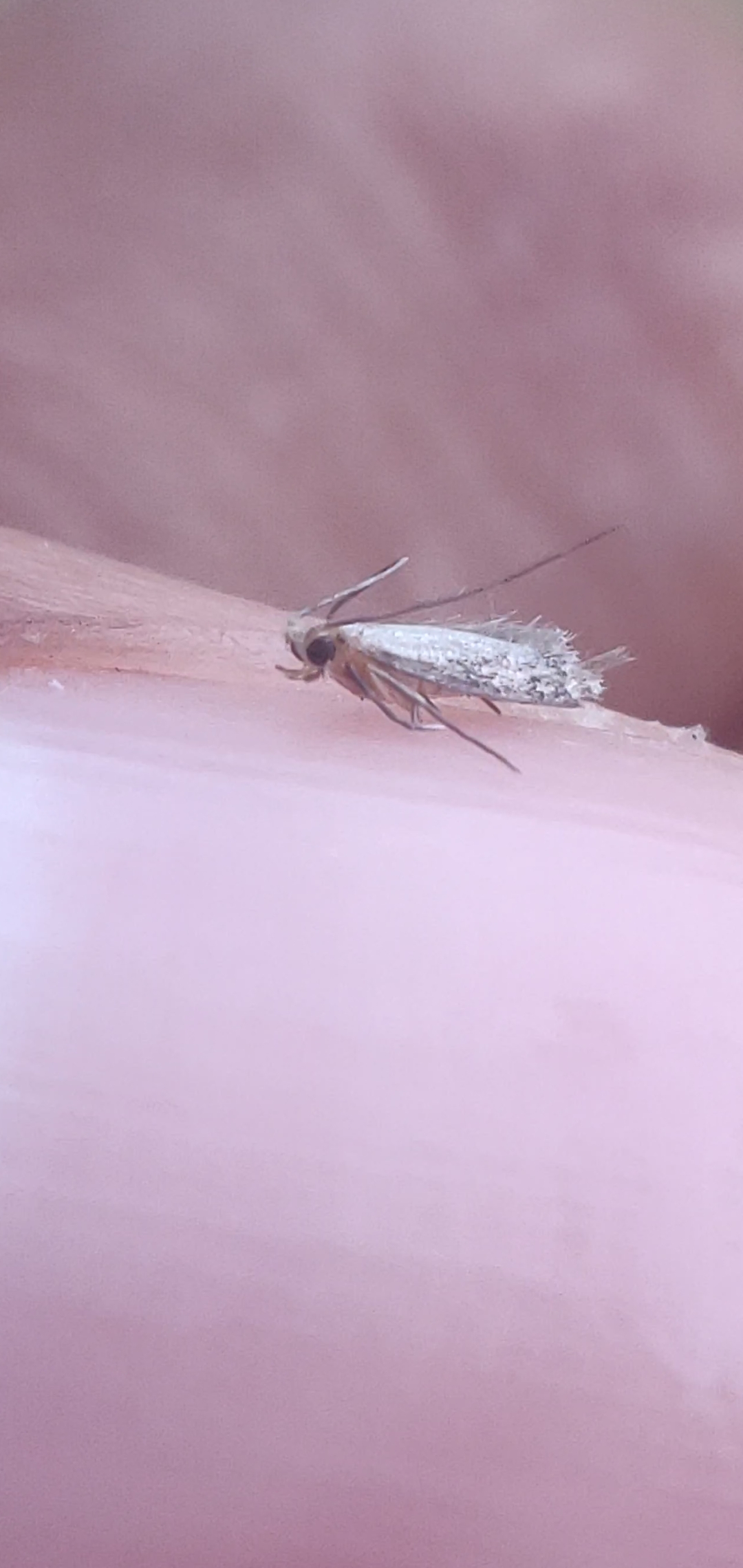
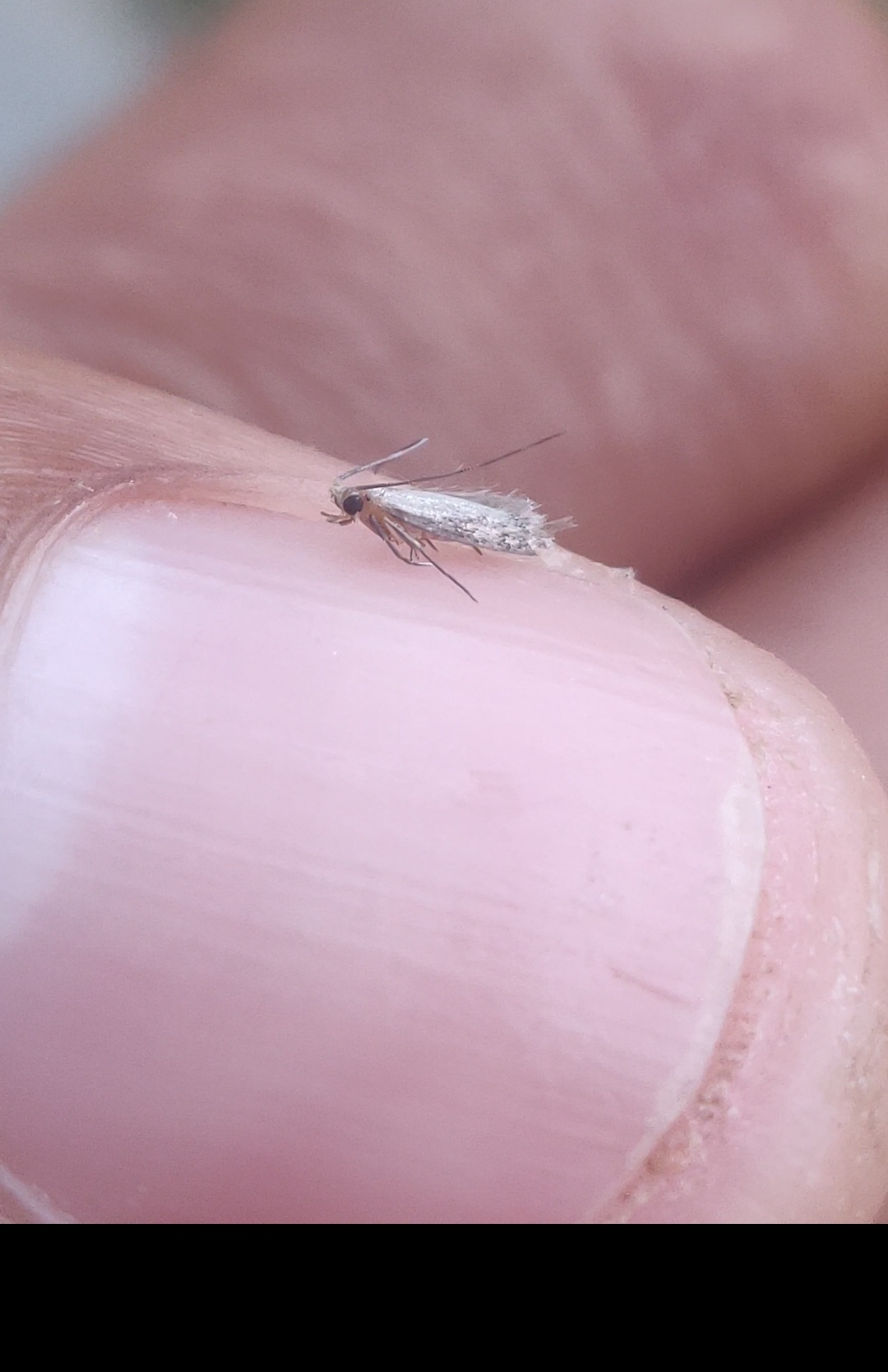
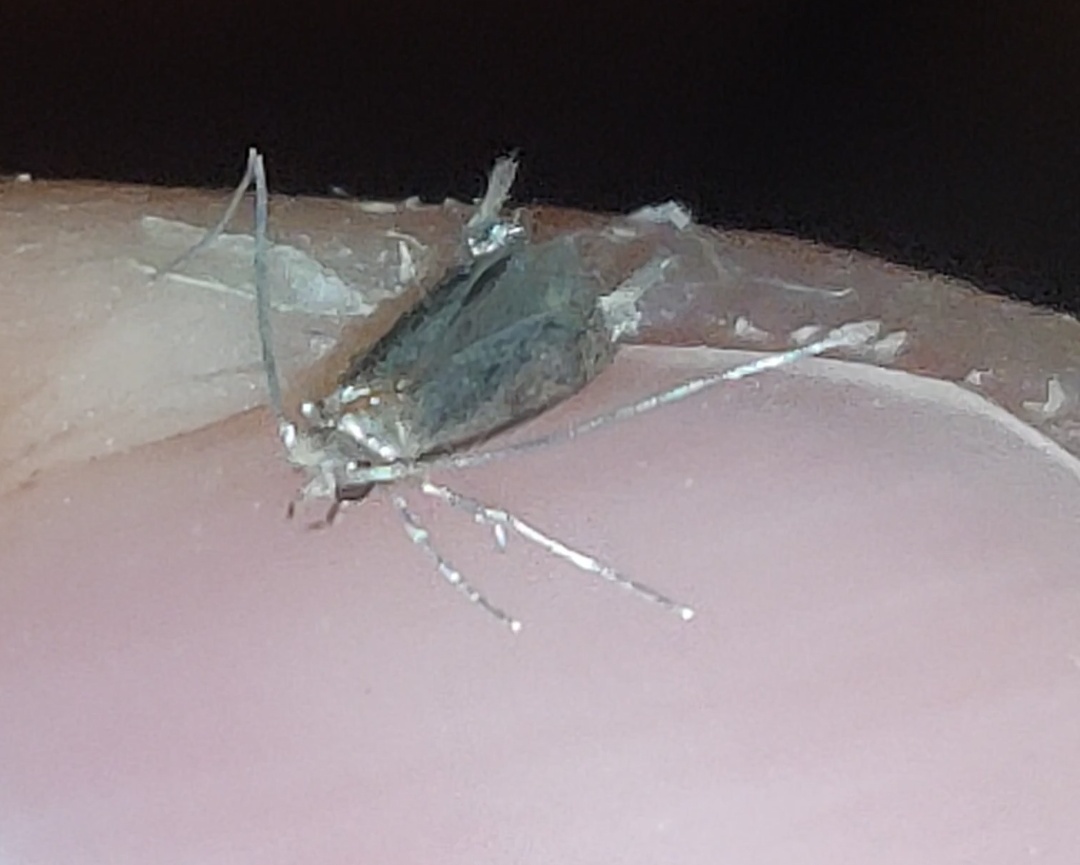
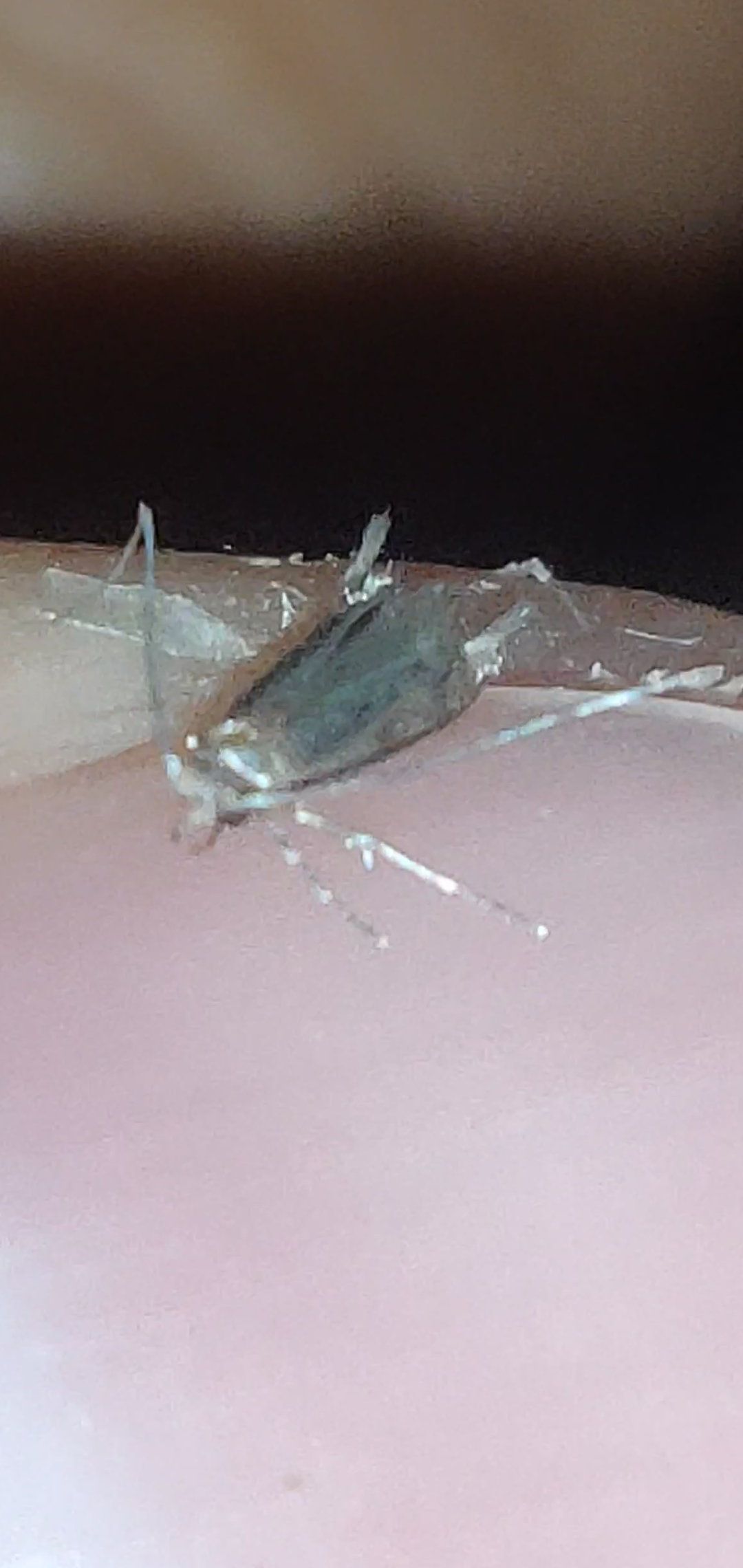
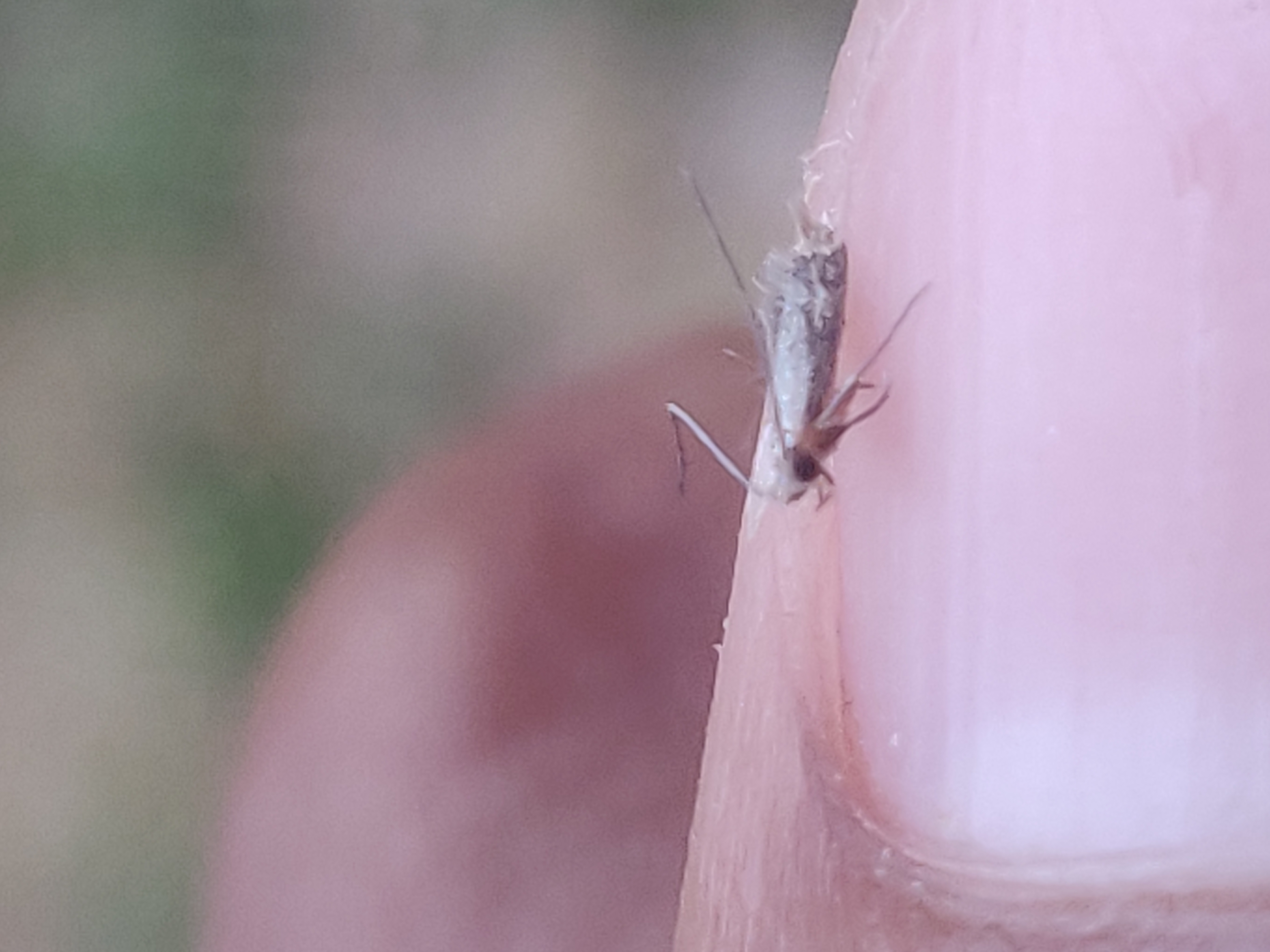
Very nice description of this Tineola bisselliella ! .. It looks so very tiny on your finger ^^ .. I am going to add this one here to the DNA Identified and Described Species library .. it makes a really ice addition ;)
Thanks @adalger perfect grateful for reading and seeing my post, if it is very small but I was able to capture
Hehe, small enough so it is very easily to be overseen .. great spotting 👍
Thank you. If I was something observant when I saw her